- News
- Reviews
- Bikes
- Components
- Bar tape & grips
- Bottom brackets
- Brake & gear cables
- Brake & STI levers
- Brake pads & spares
- Brakes
- Cassettes & freewheels
- Chains
- Chainsets & chainrings
- Derailleurs - front
- Derailleurs - rear
- Forks
- Gear levers & shifters
- Groupsets
- Handlebars & extensions
- Headsets
- Hubs
- Inner tubes
- Pedals
- Quick releases & skewers
- Saddles
- Seatposts
- Stems
- Wheels
- Tyres
- Tubeless valves
- Accessories
- Accessories - misc
- Computer mounts
- Bags
- Bar ends
- Bike bags & cases
- Bottle cages
- Bottles
- Cameras
- Car racks
- Child seats
- Computers
- Glasses
- GPS units
- Helmets
- Lights - front
- Lights - rear
- Lights - sets
- Locks
- Mirrors
- Mudguards
- Racks
- Pumps & CO2 inflators
- Puncture kits
- Reflectives
- Smart watches
- Stands and racks
- Trailers
- Clothing
- Health, fitness and nutrition
- Tools and workshop
- Miscellaneous
- Buyers Guides
- Features
- Forum
- Recommends
- Podcast
TECH NEWS
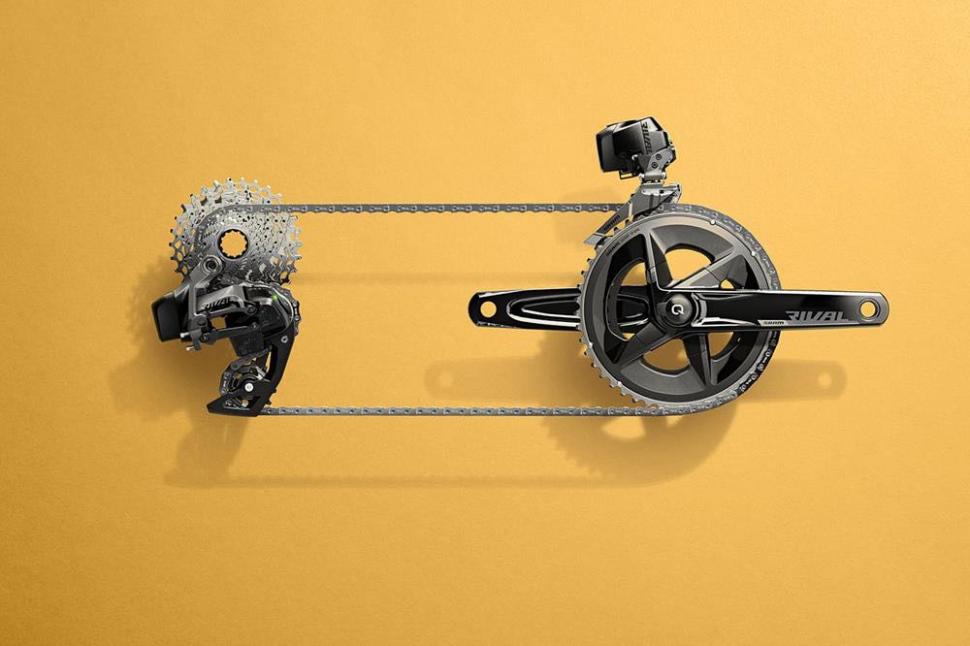 SRAM Rival eTap AXS drivetrain - 1 (1)
SRAM Rival eTap AXS drivetrain - 1 (1)SRAM introduces Rival eTap AXS groupset: find out what you need to know + video
SRAM has introduced a new Rival eTap AXS groupset for road and gravel riding that sees most of the features of higher-level SRAM Red eTap AXS and SRAM Force eTap AXS – including wireless electronic shifting – trickled down to more accessible price points. SRAM Rival eTap AXS is 12-speed, offers hydraulic disc brakes exclusively, comes in 1x and 2x gear options, and includes a new crankset-based power meter.
Check out 8 reasons why you should try the new SRAM Rival eTap AXS groupset
SRAM says that Rival eTap AXS – pronounced ‘access’ – is an electronic-shifting groupset that’s cheaper than ever before. Prices start at £1,102 for a 1x system without a power meter and top out to £1,516 for a 2x system with a power meter (prices include a shift-brake system, rotors, crankset, bottom bracket, chain, cassette, derailleur(s), batteries, and charger).
Here's SRAM's promo video...
SRAM also says that complete bikes equipped with Rival eTap AXS (without a power meter) will start at about £2,700. The new groupset will be specced as original equipment on new bikes from today.
“When we set out to design Rival eTap AXS, the brief was that we wanted riders to have the same ride experience as you get with Red [top level] and Force [second level] groupsets,” said SRAM EU Road Technical PR Coordinator, Danie Lategan. “If you were to ride three different bikes fitted with the three different tiers of components, yes there would be some subtle differences, but the overall ride experience we wanted to be the same.”
There’s a lot going on here, so let’s first break out some bullet points to give you the basic info on Rival eTap AXS in brief:
- Fully wireless electronic shifting that you can individualise (there is no mechanical option)
- Features SRAM’s unorthodox X-range gear ratios
- Integrated power meter availability
- Hydraulic disc brakes only (there is no rim brake option)
- 12-speed drivetrain
- 1x and 2x options available
- Many parts are cross-compatible with SRAM Red and Force
Okay, let’s go through the components individually.
Rival eTap AXS HRD Shift-Brake System £185
SRAM Rival eTap AXS hoods are slightly smaller than those of Red and Force eTap AXS; you can wrap your hands around them more easily. This is possible partly because there are no ports for remote shifters and no contact point adjustment (meaning you can’t alter the point in the lever stroke where the brake pads come into contact with the rotor). SRAM has left these features out to keep the price down. SRAM Red and Force eTap AXS do have these functions, so their hood shapes will not come into line with Rival.
You can adjust the reach to the levers with a 2.5mm hex key for a personalised fit, and both the hoods and the shift paddles are textured.
“We optimised the hood shape to fit hands of all sizes, for comfortable and controlled braking from any position,” says SRAM.
Like other eTap AXS drop handlebar shifters, these use CR2032 batteries. SRAM says these will last about two years if you ride 15 hours per week.
Although SRAM Red and Force eTap AXS both offer a mechanical rim brake option, SRAM Rival eTap AXS is hydraulic disc brake only, flat mount standard. The two-piston brakes callipers are very similar to SRAM Red and Force and the bleed process is the same, although the way you plug in your syringe is different.
You buy each wireless shifter and hydraulic disc brake as a single unit.
As with existing SRAM eTap AXS systems, pushing the right lever moves you to a harder gear, pushing the left lever makes it easier, pushing both together changes the front ring. That said, you can customise your controls and personalise your shift settings via the free SRAM AXS Mobile App, so you can move the derailleur outboard with a left shifter click if you like.
You can also select Sequential mode to avoid shifting into gear combinations with redundant ratios or select Compensating mode to automatically shift the rear derailleur when you shift the front derailleur to reduce the ratio jump.
Rival AXS Power Meter £322
This brand new component includes both crank arms, the chainring(s), and the power meter itself which is contained within the DUB spindle. SRAM claims that the power meter adds less than 40g over a standard non-power crankset (we’ll use the term crankset as opposed to chainset here to fall in line with SRAM, otherwise it’ll just get confusing).
The Quarq DUB-PWR unit measures left side (non-driveside) power only to calculate your total watts – it assumes that your two legs put out equal amounts of power (the brand’s spider-based Quarq and SRAM power meters measure both legs to calculate total watts). It has an IPX7 waterproof rating, meaning it can theoretically stand being submerged in a metre of water for 30 minutes.
SRAM claims a battery life of over 400 hours. Rather than being rechargeable, the Rival AXS Power Meter uses a replaceable lithium AAA battery (not an alkaline battery, which will provoke low battery messages almost immediately) that fits into a compartment in the spindle.
You can buy the Rival AXS Power Meter with 48/35T and 46/33T chainrings and a standard axle, or with 43/30T chainrings and a Wide axle (see below). You can also buy it in a 1x configuration with a Wide axle, with chainrings from 38T to 46T.
All versions are available in crank lengths of 160mm to 175mm. A bottom bracket is not included in the price.
SRAM recommends manually calibrating the power meter before each use for the best accuracy.
The Rival power meter can be used with any cycling computer or cycling-specific app that supports ANT+ and/or BLE (Bluetooth Low Energy) power meter connectivity.
Rival AXS Power Meter Upgrade £230
If you buy a bike with a SRAM Rival AXS system fitted as original equipment, it’s unlikely to come with a power meter. Rather than buying an entire Rival AXS Power Meter (above, £322), you can upgrade to a power system for just £230. That’s a relatively cheap route to power measurement.
This gets you a new left crank arm and the Quarq DUB PWR power meter in the spindle. You can use this with your existing right crank arm and chainring(s), no matter if your system is 1x or 2x. You just need to make sure that you get the correct spindle length for your crankset: Standard or Wide.
Rival AXS Crankset, Standard and Wide models, £120
If you’re not after a power meter, you can buy a Rival crankset in various configurations. The crank arms are made from polished aluminium and come in lengths from 160mm to 175mm.
Go for a double crankset (with two chainrings) and your choice is between 46/33T and 48-35T (or you can choose a Rival Wide system, see below) – what SRAM calls its X-Range gearing (see below). Whichever you opt for, SRAM says that the “tight and consistent 13T gap between chainrings makes for accurate and dependable shifting”.
“X-Range gearing technology gives you more range and a smoother gear progression, so you’re always in the right gear,” says SRAM.
If you go for a 2x setup you get a one-piece crank arm and spider, whereas with SRAM Red and Force you get a crank arm with a separate spider that bolts to it. This means you can’t use a spider-based power meter with a Force crankset.
Rival cranksets are also available in SRAM’s Wide system, first introduced into its Force groupset last year.
“The wider stance of the arms and chainrings provides clearance for extra-wide tyres, giving you the option to explore new, more challenging routes,” says SRAM. “The longer DUB crank spindle accommodates both road and mountain bike width frame bottom bracket standards for unmatched cross-compatibility across brands.”
The Wide chainline is designed for bikes with tyre widths of up to 700c x 45mm or 27.5 x 2.1in, and the crankset requires the use of a SRAM Wide front derailleur (see below).
The chainline for a Rival Wide spindle crankset is 47.5mm, compare with 45mm for a Standard Rival crankset.
A Rival Wide crankset has a Q factor (distance between the pedal attachment points) of 150.5mm, compared with 145.5mm for a standard Rival crankset.
If you want a Wide 2x crankset, the only option is 43/30T.
If you’d like to run a Wide 1x system, you have the option of cranksets with SRAM’s direct-mount X-Sync chainrings (meaning that the spider and chainring are one-piece, allowing for a weight reduction) from 38T up to 46T. X-Sync tooth profiles are designed to increase chain retention and wear life while reducing friction and noise.
Rival eTap AXS Front Derailleur, Standard and Wide models, £162
The SRAM Rival eTap AXS front derailleur is available in two different flavours: one that’s said to be optimised for use with 46/33T and 48/35T Standard spindle cranksets, and the other for use with a 43/30T Wide crankset (see above) – which has a longer spindle. Each features SRAM’s Yaw technology, meaning that it rotates slightly when you shift to avoid chain rub and the need to trim when you change gear.
A Rival eTap AXS derailleur battery gives you approximately 60 hours of riding, although that will depend on how often you change gear, of course. The battery is the same as for the rear derailleur, and identical to the ones used for SRAM Red and Force eTap AXS.
Rival eTap AXS Rear Derailleur £236
The Rival eTap AXS rear derailleur is designed for use on both 1x and 2x drivetrains and can cope with a maximum sprocket size of 36T. Rival 12-speed cassettes are offered in 10-30T and 10-36T (see below), but the Rival eTap AXS rear derailleur will work with SRAM Red and Force 10-28T and 10-33T cassettes as well.
The drivetrain tooth capacity (the difference between tooth numbers on the smallest and largest chainrings added to the difference between tooth numbers on the smallest and largest sprockets) is 39.
SRAM uses a mechanical spring clutch mechanism that’s designed to keep the chain in place and the drivetrain quiet when you’re riding over rough roads, whereas Red and Force eTap AXS derailleurs use SRAM’s Orbit fluid damper system.
If you run a 2x system, the small chainring/small cog combination is locked out to stop the chain from rubbing against the inside of the large chainring (meaning that the total number of gear selections available to you is 23). If you try to shift into the small chainring/small cog, the rear derailleur LED will alternate green and red flashes to indicate a rejected shift.
Rival XG-1250 Cassette £112
The Rival 12-speed cassette is available in 10-30T and 10-36T options.
Here are the cog sizes of each Rival XG-1250 cassette:
10-30T 10,11,12,13,14,15,17,19,21,24,27,30
10-36T 10,11,12,13,15,17,19, 21,24,28,32,36
There is no eTap AXS cassette available with an 11T start.
Rival eTap AXS is compatible with SRAM Red and Force 12-speed cassettes from 10-28T up to 10-36T.
All 12 cogs on a Rival Rival XG-1250 cassette are steel with a nickel-chrome plating, and there are damper rings between the cogs to reduce vibration.
The cassettes work with XDR driver bodies. XDR is a mounting system for cassettes that feature cogs with fewer than 11 teeth. The XDR interface is 1.85mm longer than XD and is designed for road hubs (XDR driver bodies are available from most wheel manufacturers to retrofit 11-speed road rear hubs).
Used with a 10-36T cassette, all double chainring combinations allow for a sub-1:1 gear ratio.
48/35T chainrings with 10-36T cassette 494% gear range
46/33T chainrings with 10-36T cassette 502% gear range
43/30T chainrings with 10-36T cassette 516% gear range
Rival Chain £28
The Rival chain comes in SRAM’s Flattop design which has trickled down from the higher level groupsets.
SRAM says, “The Flattop technology allows for a narrower chain with quieter operation and increased strength and durability.”
The plates of 12-speed Flattop chains are thinner than those of 11-speed chains. The extra material added at the top is designed to compensate for what would otherwise be reduced strength.
The Rival chain is compatible with all 12-speed 1x and 2x eTap AXS drivetrains (not Eagle AXS) and includes a Flattop PowerLock tool-less connector.
Differences between Rival and SRAM Red and Force eTap AXS at a glance
Here are the key differences between Rival eTap AXS and the more expensive options in SRAM’s range
- The hood of the Rival shifter has a narrower grip than SRAM Red and Force eTap AXS systems.
- Rival eTap AXS has an alloy brake lever whereas it’s carbon with Red and Force.
- Rival eTap AXS does not allow for auxiliary remote shift buttons, whereas SRAM RED (two each per shifter) and Force eTap AXS (one each per shifter) do.
- Rival eTap AXS 2x cranksets are polished aluminium with an integrated spider, while the 1x polished aluminium crankset has a direct-mount chainring. You can’t swap from 2x to 1x as you can with Red and Force eTap AXS cranksets. Both SRAM Red and Force crank arms are carbon.
- The Rival power meter is based in the crankset spindle, while SRAM Red and Force use spider-based power meters.
- The Red and Force eTap AXS rear derailleurs feature SRAM’s Orbit fluid damper system while Rival eTap AXS is equipped with a mechanical spring clutch for chain retention.
X-Range gearing
X-Range gearing isn’t new but this is the first time that it has trickled down to the Rival groupset. Here’s what’s on offer, according to SRAM.
“X-Range offers wider range, more useful and smoother gear progression, as well as smarter shift settings—enabled by AXS,” says SRAM. "X-Range achieves this by moving some of the gear range from the front of the drivetrain to the back.
“We’ve employed a smaller, consistent difference (13-teeth) between the chainrings while giving the cassettes wider range (up to 10-36T, or 360%). That means you can stay on the same ring longer, requiring fewer front shifts, which are inherently less efficient than rear shifts. And when a front shift is executed, the smaller jump is smoother and allows you to get to the right cadence with fewer compensation shifts in the rear. Fewer, faster front shifts make it easier for you to find the right gear, and that’s a distinct performance advantage relative to traditional drivetrains.
“X-Range relies on cassettes built around a 10T start. This allows us to keep the cogs and chainrings smaller overall, eliminating the potential weight gain of a wide- range 11T start drivetrain.”
Read more about X-Range gearing.
| Component | Weight | Price |
|---|---|---|
| Shift-Brake System | 845g | £185 each |
| Crankset | 844g | £120 |
| 43/30T Wide Crankset | 822g | £120 |
| 1x Wide Crankset | 703g | £120 |
| Front Derailleur | 180g | £162 |
| Wide Front Derailleur | 182g | £162 |
| Rear Derailleur | 366g | £236 |
| XG-1250 Cassette | 282-338g | £112 |
| Power Meter | 893g | £322 |
| 43/30T Wide Power Meter | 871g | £322 |
| 1x Wide Power Meter | 745g | £322 |
| Power Meter Upgrade | +40g | £230 |
| Rival Chain | 266g | £28 |
SRAM Rival eTap AXS is available from today.
Mat has been in cycling media since 1996, on titles including BikeRadar, Total Bike, Total Mountain Bike, What Mountain Bike and Mountain Biking UK, and he has been editor of 220 Triathlon and Cycling Plus. Mat has been road.cc technical editor for over a decade, testing bikes, fettling the latest kit, and trying out the most up-to-the-minute clothing. He has won his category in Ironman UK 70.3 and finished on the podium in both marathons he has run. Mat is a Cambridge graduate who did a post-grad in magazine journalism, and he is a winner of the Cycling Media Award for Specialist Online Writer. Now over 50, he's riding road and gravel bikes most days for fun and fitness rather than training for competitions.
Latest Comments
- PRSboy 7 min 37 sec ago
A 26 yr old in a £60k BMW M2 Wish I'd worked harder at school...
- Secret_squirrel 13 min 54 sec ago
This is my favourite rant - but I really dont see the point of windproof cycling clobber that isn't properly waterproof - especially for the UK. ...
- leedorney 23 min 28 sec ago
Whenever I drive, which isn't much, I often wonder why other seem to just not care at all, it's like so sense and appreciation for any other human...
- mitsky 23 min 7 sec ago
At 14 minutes and 15 seconds JV said:...
- Secret_squirrel 30 min 7 sec ago
Im not sure how to feel about this tbh. There's not really a cycling aspect to this survey is there? All its really saying is that women - as...
- chrisotherwise 33 min 39 sec ago
Thanks for all the kind replies. I was back on my bike yesterday and went and had a look at where I had my fall. No obvious diesel on the road or...
- Secret_squirrel 40 min 23 sec ago
The Highways Agency called. They want a billion miles of fence to make cycling safe on the roads. Less brain dead hyperbole please.
- Bob Sprocket 41 min 4 sec ago
Toe clips, now we're talking.
- brooksby 43 min 43 sec ago
Exactly. What seems to be happening is that the Torygraph is opposed to ANY taxpayer money being spent on ANY cyclists.
- philhubbard 4 hours 24 min ago
Absolutely not. I work for a cycling company and regularly travel to Europe with a bike, I always get stopped to check if I had products to sell in...
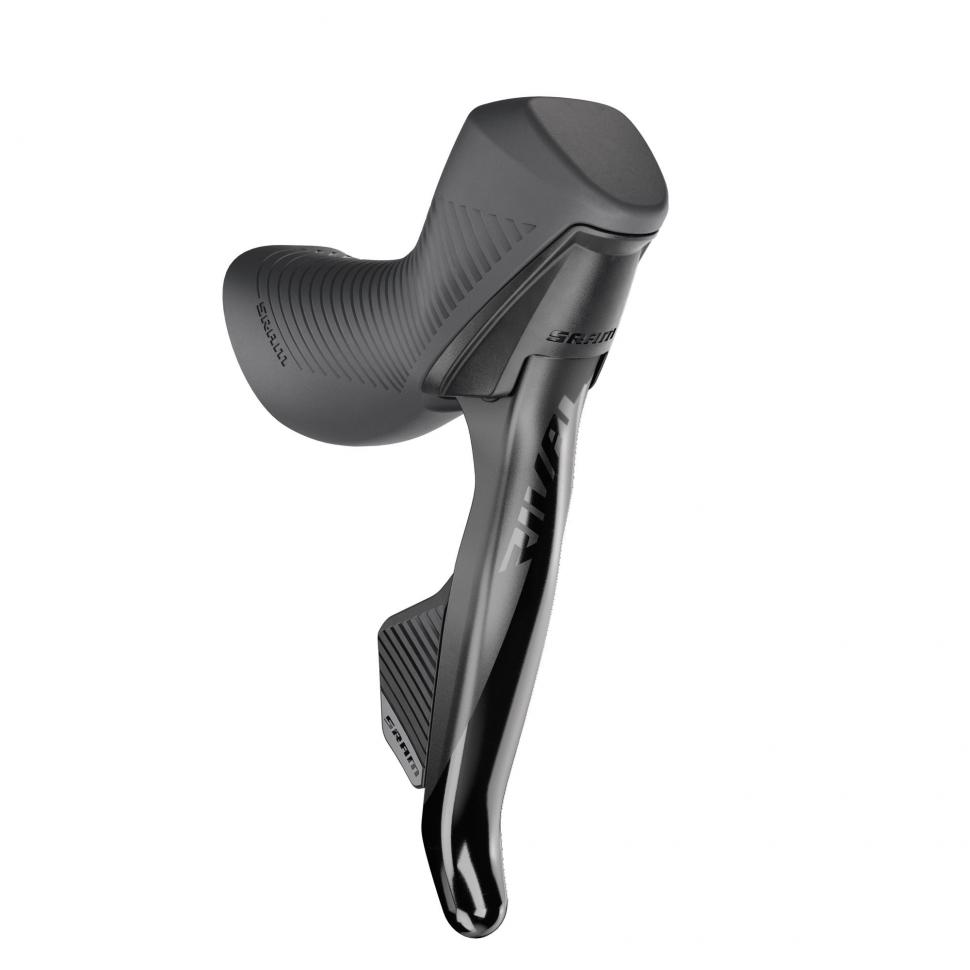


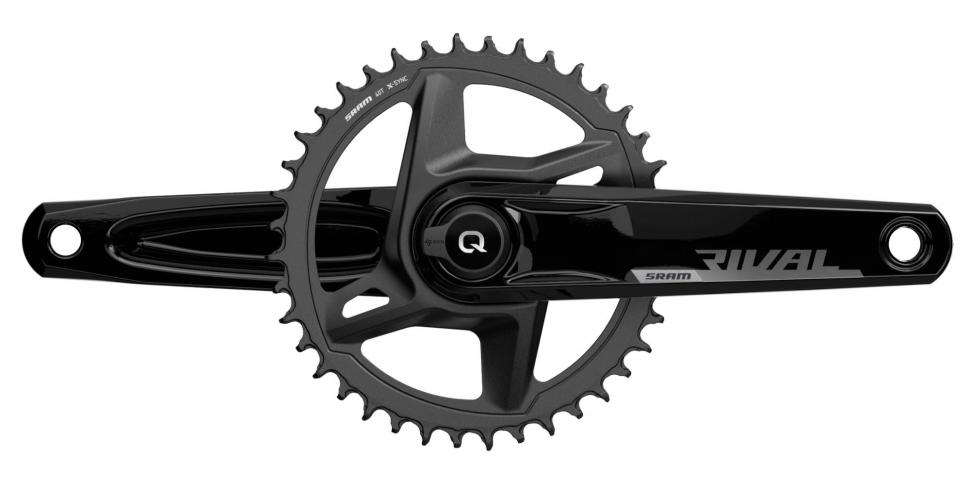

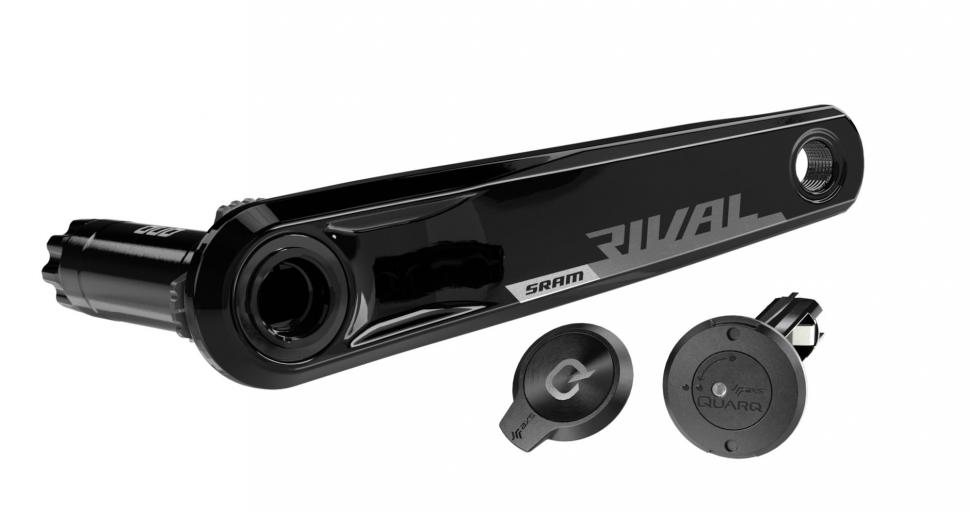
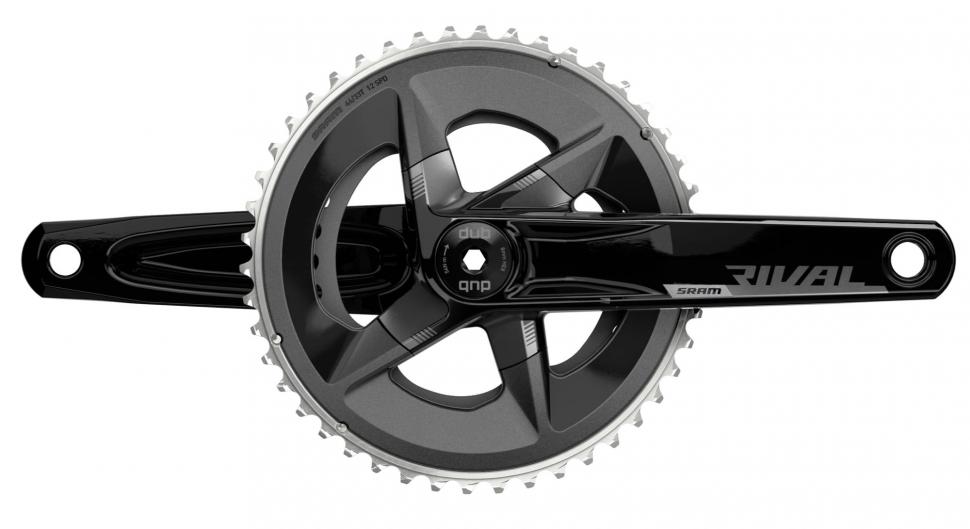



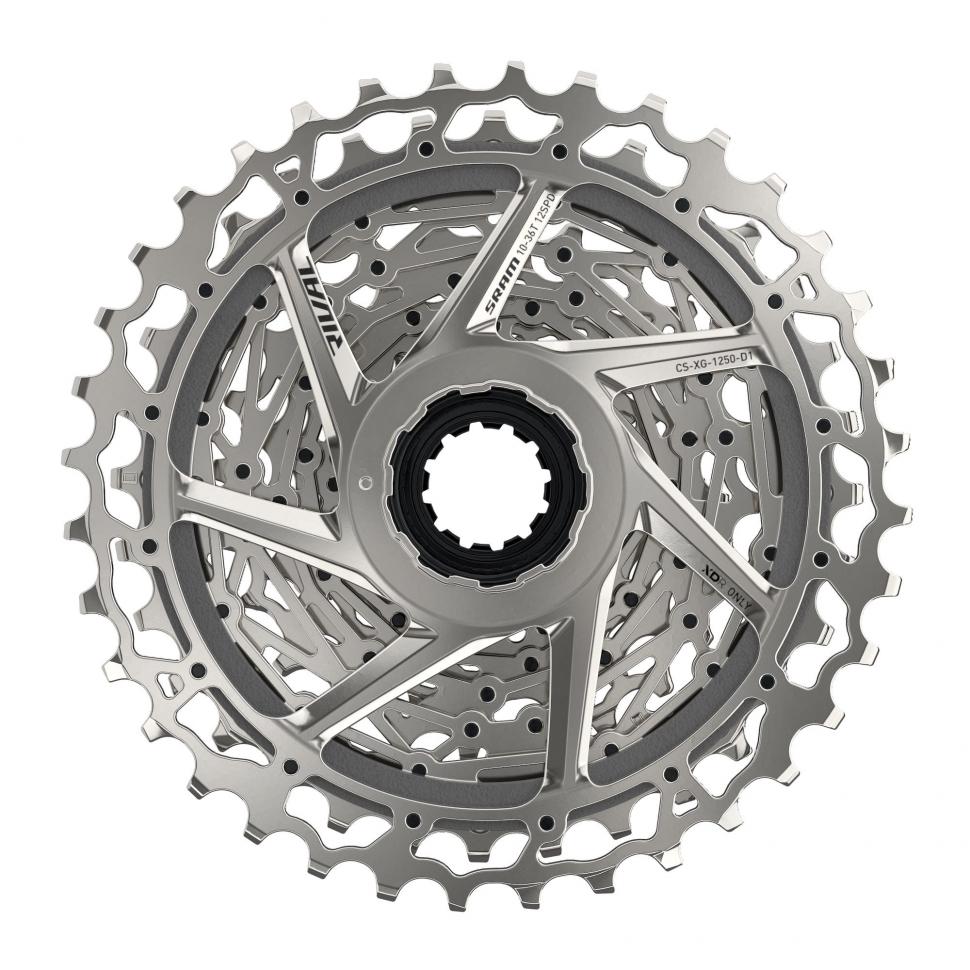

Add new comment
28 comments
Sram are terribly good at promoting their products and while I still can't quite see the point of electronic gears the one product that I have found really interesting is the Classified rear hub as a replacement for the front mech'. The existing electronic groupsets seem to do nothing new Classified's product may really be a revolutionary (wireless) take on an old idea present in many folding bikes from Dahons to Bromptons. And it's only made just accross the Channel
Why 12 speed? I'd much rather have seen a Rival22 Etap where a cassette is £35 than a shiny new 12 speed groupset with a £120 cassette! It feels as though an 11 speed edition could have been made for about ~£800 given the price difference in the non-electronic components. And why the faff of XDR for the marginal benefit of a 10t cog? I feel like a luddite saying it, but XDR/10T cogs/smaller chain rings really seem like progress for progress' sake.
12 speed seems like a good thing per se (closer spacing is never a problem as far as I'm concerned with my 88-91rpm only legs) but why design it to need a whole new freehub "standard", a whole new set of cassette ranges, and a whole new set of cranksets. Why not make an 11-28 but with 12 cogs?
Campagnolo have a cassette, and several groupsets, for you, all of which work on the same freehubs as their 11sp ... just saying
Very heavy groupset. Nearly a kilo heavier and more expensive than 105 and even Campag Chorus.
Whoever you are, weight weenie or newbie, a whole kilo is something you would notice lifting shop bikes, not least out on the road.
Very odd comparison, you're not comparing remotely like with like. My calculations say it's about 0.5kg heavier than Ultegra di2. That's based on Ultegra di2 being 190g lighter than Force Axs and Rival axs being reported as 300g heavier than Force.
My 2014 11 speed Chorus rim brake groupset weighs just 2050g plus cables.
There's some really porky stuff around these days.
disc only? I'm out.
and a guy on a club ride this week had an issue with his electronic rear mech, which if cable would have been fixable in 1minute (twist barrel adjuster clockwise half a turn) but as it was electronic he had to turn round and go home.
so double no
Agreed. I've got 3 perfectly good frames, all of which are rim brake. Never really concerns me with it because the commuter bike and winter one run aluminium rims and I don't have any trouble braking. I'm sure it's better for alps etc but as it is if you do 60km near me with over 400m of climbing you're doing well, so I've never felt the need to upgrade. Bizarre ideas
Should of pressed 1 button put it in trim mode and click the shifter up or down til it was adjusted.
Agreed. So either the OP is making it up, or the rider in question didn't know what he was doing. My money is on the former.
First news here. If you look at the brand new 2022 BMC Teammachine lineup, it’s quite clear that Shimano is gonna release the new Dura-ace, Ultegra and 105 (yes 105) groupsets in Di2 versions, probably in the next weeks. And probably only on Di2 versions, no more room for new mechanical groupsets; which is normal IMHO as they do not have anything better to offer. BMC left some empty spots in its lineup for the new Shimano configurations, which easily matches with the new three groupsets mentioned before.
On the other hand, BMC took advantage of that, and has decided to increase their prices for same bikes configurations, around 500$ and above between 2021 and 2022 models, you never know how expensive new paints can be in 2022 LOL. Is this industry ever going to try to stop cheating customers?
Where is your source for this information? You've already made yourself look like a tit on weight weenies and you've still not stated how you know they're about to bring out three new Di2 groupsets? 17 posts on WW (all about this magical trio of goupsets) and 3 on here - I call BS.
Be respectful man, if you're clueless, doesn't mean the rest of us are. I told you the source, if you were capable to read my post.
If you knew how the lineups of some bike brands work, you could figure out and get to the same conclusion, easy, maybe not for you. Another clue is where this post was posted, SRAM launched a rival AXS etap, don't you think shimano is gonna do the same with the 105?
I hope you apologize in two month the BS you freely said about me. Have a good life, if you can
I understand it's the way life is going but how hard would SRAM have found making it rim brake too? They can do 1x, 2x but not rim brakes? I get that marketing people want us to stop using them but not even trying is a bit rich...
I get what you're saying, but I also get why SRAM would think they don't need to develop rim brake brifters for every group level given the obvious market trend towards discs.
Force AXS rim brake brifters are still available, and everything in the road AXS universe is cross-compatible. A full Rival AXS rim brake groupset would have maybe been $150 less than what a mixed Rival AXS groupset with Force AXS bim brake brifters will cost. I'm not surprised that when SRAM drew a venn diagram of folks who 1. Must have rim brakes 2. Would buy a full Rival AXS rim brake groupset for ~$1300 dollars 3. Wouldn't buy a mixed Rival/Force AXS rim brake groupset for ~$1450, they concluded that the interseciton was so small it wasn't worth the development investment and inventory carrying costs of a Rival AXS rim brake brifters.
I think SRAM announced sometime in 2020 that they'd only be manufacturing rim brakes as spares from 2021 and that no new group sets would be made with them in future, so it's not a surprise. As for why, it's simple: 80%+ of their customers want disc, and that % is increasing every year, so it's a pretty obvious economy of scale on their part. Not saying it's right or wrong, just the way it is.
They're going to need to bring the price of hydraulic brifters down if they're going to stop manufacturing cable-brake levers!
Why would they, when they're selling more than they can make? I agree the costs are daft, but their accountants won't be pushing for a price cut!
There are a lof of existing bikes out there which are not disc brake compatible, bikes which will periodically need replacement components
SRAM cater for this via the AXS cross comparability.
You'll pay a slight premium but rim brakes are catered for.
Planned obsolesence, I think is the trade term...
room in the market for some aftermarket hydraulic rim brakes it seems, they seemed popular very briefly (and are probably great for a TT bike)
There's quite a long discussion about this on another forum. There certainly seems enough interest for a small, specialist manufacturer to develop these units. The problem, though, is that all manufacturers levers work a bit differently, so it's probably very expensive to develop effectively 3 different niche products.
Will be interesting to see what the bulk retail price is. Think it will undercut Ultegra DI2 once you add in all the cables and bits and bobs.
wonder when it'll be in the shops?
I'm going with spring 2023, based on how long it took Red eTap to become widely available after launch.
I'd like it more with standard chainring choices and adjustable shifters. As it is, Ekar would be my first choice on a new bike.
I have recently bought Ekar for an n=1 bike (road & gravel; 2 wheelsets, 2 cassettes). It has some annoying aspects - upshifts are a bit vague, there's currently limited wheel choice because of the N3W freehub, you can't brake and upshift at the same time - but it is nonetheless very good and I think the simplicity (1x, mechanical, 1 lever = 1 action) and ergonomics are very hard to beat for most riders.
If I had been able to source it, it would have been a very close call with SRAM AXS (46/33, 10-36), but given the SRAM was unavailable anywhere, it was a bit of a theoretical debate.
Personal take: now, with Ekar and AXS wide (and likely Shimano 12 speed soon) the 1 bike, 2 wheelsets option is becoming a really good one for anyone who isn't racing or looking to take on extreme terrain.